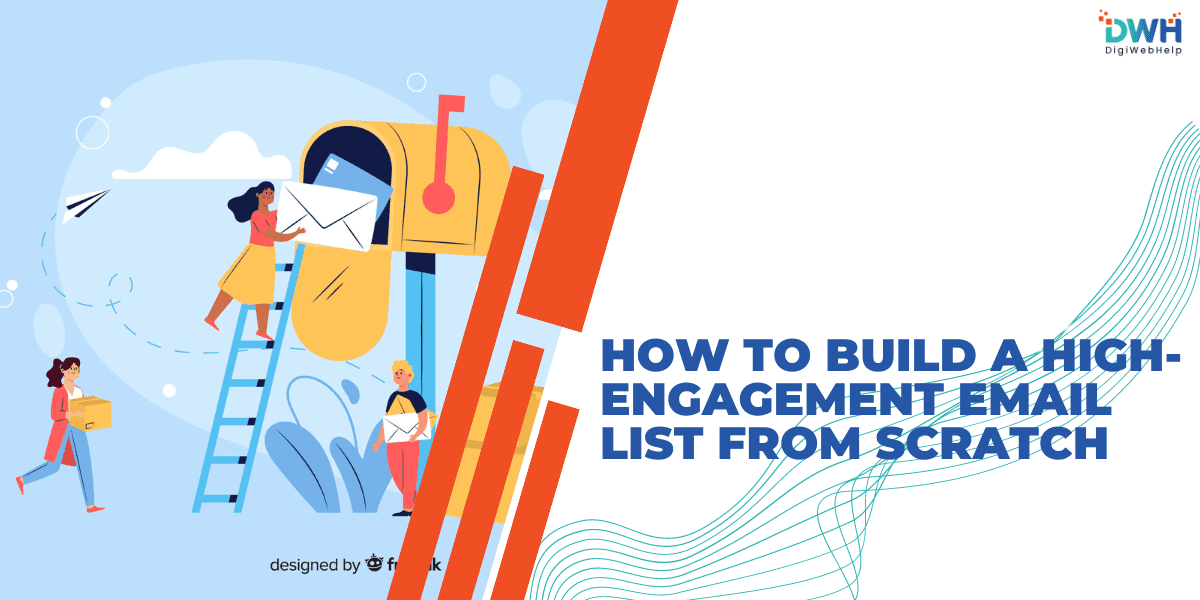
How to Build a High-Engagement Email List from Scratch
Building an email list is one of the most effective strategies for nurturing leads and driving conversions. However, not just any list will do. A high-engagement email list is made of active subscribers who are interested in your content. This email list is essential for maximizing the impact of your email marketing efforts. In this blog, we will explore the steps to create a high-engagement email list from scratch. This guide will help you create a valuable asset for your business.
Understanding the Basics of Email Marketing
An email list is a collection of email addresses that businesses gather from people interested in their products, services, or content. Every person on this list has opted in to receive communications, making them more likely to engage with emails they receive.
However, the difference between a regular email list and a high-engagement email list lies in the quality of the subscribers. A high-engagement list consists of active subscribers. They don’t just open your emails. They click on your links and take desired actions. This level of engagement is crucial for a successful email marketing campaign. It directly impacts important metrics like open rates, click-through rates, and, most importantly, conversions.
Setting Clear Goals for Your Email List
This will serve as a roadmap, guiding your strategy and helping you measure success. A few common objectives for an email list include:
- Increasing Open Rates: Ensuring your subscribers are opening your emails.
- Boosting click-through rates: Encouraging subscribers to click on links in your emails.
- Driving conversions: Getting subscribers to take specific actions like buying a product or registering for a webinar.
Setting these goals will help you tailor your list-building efforts to achieve specific outcomes. This will ensure that your email marketing strategy is focused and effective.
Identifying Your Target Audience
Building a high-engagement email list begins with identifying your target audience. Knowing who you want to reach is key to getting the right subscribers-people who are genuinely interested in your content.
How can you identify your target audience?
Start by creating customer personas. These aren’t just profiles but in-depth information of your ideal customers. A customer persona should include their demographics, piano points, interests, and buying behaviors.
You can conduct market research to understand your audience’s needs and preferences. The better understanding of your audience means the better you can tailor your content and lead magnets to attract high-quality subscribers.
Creating Compelling Lead Magnets
Lead magnets are incentives that entice people to subscribe to your email list. They’re great at attracting subscribers who are genuinely interested in what you’re selling. Effective lead magnets include:
- eBooks or whitepapers: In-depth guides on topics relevant to your audience and your product or services.
- Cheat sheets or checklists: These are quick, easy-to-use resources that offer value to your audience.
- Discount codes: These are special offers or price cuts on your products or services.
The key to a successful lead magnet is offering something that aligns with your audience’s needs and interests. A valuable lead magnet encourages more people to subscribe and engage with your emails.
Optimizing Your Signup Forms
Turning website guests into subscribers needs a well-optimized signup form. Your form must be easy to find, complete, and appealing enough to encourage conversions.
Here’s how to optimize your signup forms:
- Placement: Ensure your signup forms are visible and accessible, such as the header, footer, or a pop-up on your website.
- Design: Stick to a simple, eye-catching design. Reduce clutter and keep the form stand out on your page.
- Copywriting: Use clear, compelling language that highlights the benefits of subscribing. So instead of “Sign up for our newsletter,” try using “Get exclusive tips and discounts delivered to your inbox.”
Driving Traffic to Your Signup Forms
Getting your signup forms in place is just the first part. The next is to drive traffic to your forms. The more traffic you get on your form means the more subscribers you will attract.
There are several ways to drive traffic to your signup forms:
- Social media: promote your lead magnets and signup forms on platforms where your target audience is most active.
- Blog posts: include a CTA in your blog content to encourage subscription.
- Paid ads: Use targeted ads on Google or Facebook to broaden your reach.
Implement a multi-channel approach to reach a diverse audience and attract more subscribers.
Nurturing Your Email List with Valuable Content
After building your email list, it’s important to nurture your subscribers with useful content. The secret to effective engagement is providing content that resonates with your audience and adds value to their lives.
Here are some tips to engage your email list:
- Newsletters: Share regular updates, tips, and special offers through your newsletters.
- Custom emails: Use individual data to customize your emails. This enhances relevance and user engagement.
Consistency is crucial. Regularly sending quality emails helps build trust and retain your audience’s interest.
Segmenting Your Email List for Better Engagement
Dividing your email list into smaller groups based on specific criteria is called email list segmentation. This allows you to send more targeted messages to increase engagement.
Common ways to segment your email list:
- Behavior: Segment your list based on how they interact with your emails.
- Preferences: Allow your subscribers to choose the content they want to receive.
- Demographics: Segment based on age, gender, location, and so on.
Analyzing and Adjusting Your Strategy
Building a high-engagement email list is an ongoing process. Regularly analyzing your email marketing metrics is crucial for consistent improvement. Some important metrics to track include
- Open rates: The percentage of subscribers who open your emails.
- Click-through rates: The percentage of subscribers who click on the links inside the email.
- Conversion rates: The number of subscribers who perform the desired action.
You can optimize your email content with A/B testing. Trying out different subject lines, messages, and designs helps identify what truly clicks with your audience. This will help boost your engagement rates gradually.
Conclusion
Building a high-engagement email list from scratch is a strategic process. This requires careful planning and a comprehensive understanding of your audience’s preferences. Follow the steps in this comprehensive guide to create an email list that grows, drives meaningful interactions, and boosts conversion.










